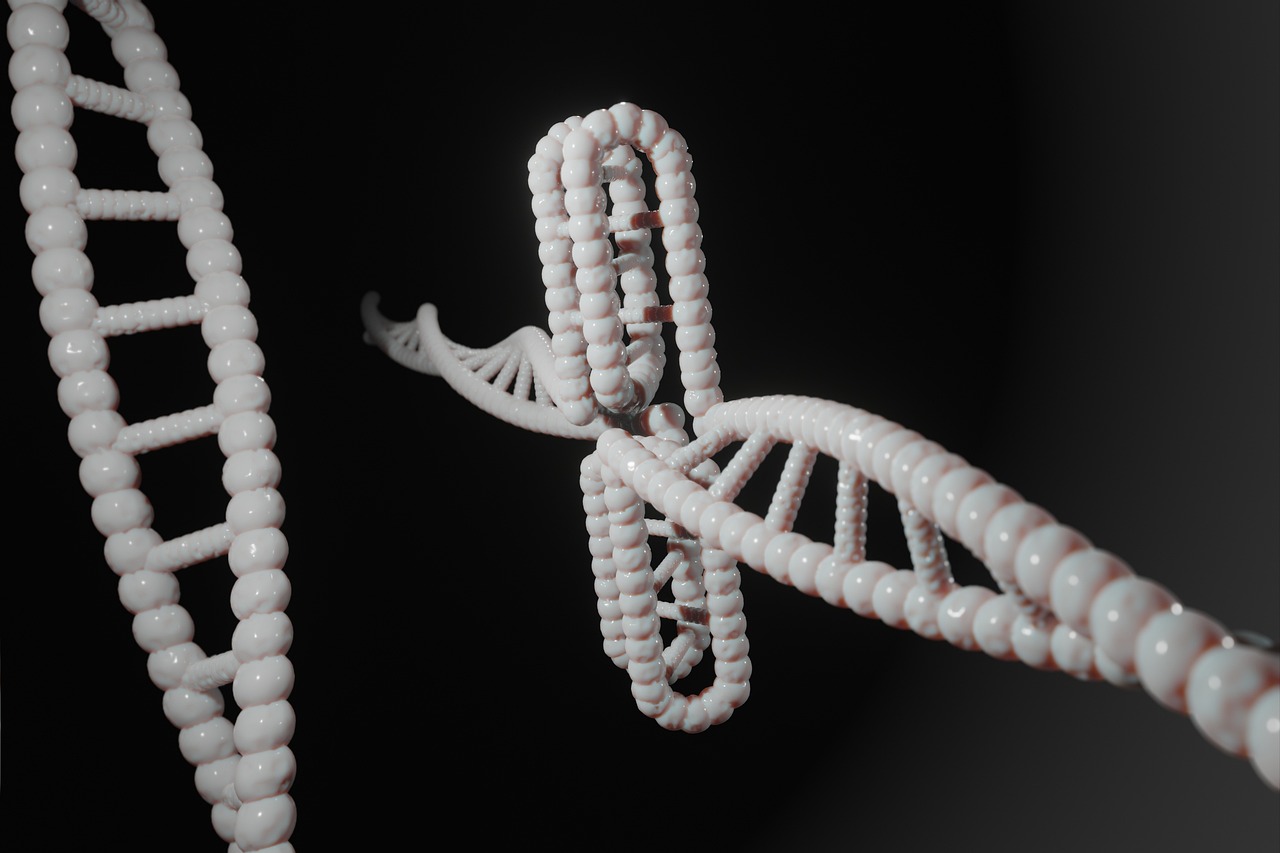Mendel: The Father of Genetics
Gregor Mendel, often referred to as the Father of Genetics, is renowned for his groundbreaking work that laid the very foundation of the field of genetics. His pioneering experiments with pea plants brought about a paradigm shift in our understanding of heredity and inheritance patterns, shaping the course of biological science for generations to come.
Mendel's journey towards scientific greatness began with his early life and education. Born in a humble village in Austria, he overcame numerous challenges to pursue his passion for understanding the mysteries of nature. His educational pursuits eventually led him to the Augustinian St. Thomas's Abbey in Brno, where he conducted the experiments that would change the course of genetic research forever.
The heart of Mendel's work lies in his meticulous experiments with pea plants. Through careful observation and documentation, he unraveled the complexities of inheritance and formulated his renowned laws of genetics. His observations on traits such as plant height, seed texture, and flower color paved the way for the development of his revolutionary theories.
One of Mendel's fundamental laws, the Law of Segregation, posits that individuals possess two alleles for a trait, with each allele segregating independently during gamete formation. This principle laid the groundwork for understanding how genetic traits are passed down from generation to generation.
Another key tenet of Mendel's work is the Law of Independent Assortment, which elucidates how different traits are inherited independently of each other. This principle challenged prevailing beliefs about heredity and provided a new framework for studying genetic inheritance.
Despite initial indifference and skepticism towards his work, Mendel's discoveries eventually gained recognition as a cornerstone of modern genetics. His insights into heredity and genetic variation have influenced countless scientists and continue to shape our understanding of the biological world.
The rediscovery of Mendel's work in the early 20th century sparked a renaissance in genetic research, leading to a deeper appreciation of his contributions to the field. Scientists began to realize the profound implications of his laws of inheritance and their relevance to contemporary genetic studies.
In the modern era, Mendel's laws find diverse applications in genetic research, breeding programs, and the study of genetic diseases. His principles form the basis of genetic engineering and biotechnology, enabling scientists to manipulate DNA for various purposes, from creating genetically modified organisms to developing novel medical treatments.
Gregor Mendel's legacy as the Father of Genetics endures through the enduring impact of his work on the scientific community. His pioneering experiments with pea plants and the formulation of his laws of inheritance continue to inspire new generations of researchers and shape the future of genetic science.

Early Life and Education
Gregor Mendel's pioneering work laid the foundation for the field of genetics. His experiments with pea plants revolutionized our understanding of heredity and inheritance patterns.
Gregor Mendel, born Johann Mendel in 1822 in what is now the Czech Republic, grew up in a humble farming family. Despite facing financial challenges, Mendel's passion for learning led him to pursue higher education. He entered the Augustinian St. Thomas's Abbey in Brno, where he studied natural sciences and mathematics. His academic excellence paved the way for his later experiments with pea plants, setting the stage for his groundbreaking discoveries in genetics.
During his time at the monastery, Mendel conducted extensive experiments with pea plants in the garden. He carefully selected traits such as seed color, pod shape, and plant height to study patterns of inheritance. By crossbreeding different varieties and meticulously recording the results, Mendel was able to establish the fundamental principles of heredity.
Mendel's Law of Segregation, derived from his pea plant experiments, postulates that each individual carries two alleles for a trait, one from each parent. These alleles separate during the formation of gametes, ensuring genetic diversity in offspring.
The Law of Independent Assortment, another key concept from Mendel's research, states that different traits are inherited independently of each other. This principle explains the inheritance of multiple traits simultaneously and laid the groundwork for understanding genetic diversity.
Despite the initial lack of recognition, Mendel's work gained prominence after his death. His laws of inheritance became the cornerstone of modern genetics, influencing the work of future scientists and shaping our understanding of genetic mechanisms.
In the early 20th century, Mendel's research was rediscovered by scientists, leading to a renewed appreciation of his contributions. This rediscovery sparked a revolution in genetics and paved the way for further advancements in the field.
Mendel's laws continue to have a profound impact on modern genetic research and applications. From breeding programs that aim to enhance desirable traits in crops to the development of genetic therapies for inherited diseases, Mendel's principles remain relevant in contemporary genetics.
The principles established by Mendel are crucial in genetic engineering and biotechnology. Scientists leverage these laws to manipulate DNA, create genetically modified organisms, and develop innovative biotechnological solutions for various industries.

Pea Plant Experiments
Gregor Mendel's groundbreaking experiments with pea plants in the mid-19th century paved the way for the field of genetics as we know it today. Through meticulous observation and methodical documentation, Mendel unraveled the mysteries of heredity and laid the foundation for our understanding of inheritance patterns.
Mendel carefully selected pea plants for his experiments due to their distinct traits and ease of cross-breeding. By controlling the pollination process, he was able to study the transmission of specific characteristics from one generation to the next. Through his work, Mendel identified key traits such as seed shape, flower color, and plant height, which formed the basis of his laws of inheritance.
One of the most significant aspects of Mendel's pea plant experiments was his focus on quantitative analysis. By counting and recording the occurrence of different traits in the offspring of his crosses, Mendel was able to derive statistical patterns that led to the formulation of his laws of inheritance.
Through his experiments, Mendel established the Law of Segregation, which posits that each individual carries two alleles for a trait, one inherited from each parent. These alleles segregate during the formation of gametes, ensuring genetic diversity in offspring.
Furthermore, Mendel's observations led to the development of the Law of Independent Assortment, which states that different traits are inherited independently of each other. This principle revolutionized our understanding of how traits are passed down from one generation to the next.
Overall, Mendel's pea plant experiments were a tour de force in the world of science, demonstrating the power of systematic experimentation and rigorous analysis in unraveling the mysteries of heredity. His work continues to inspire and inform genetic research to this day, serving as a testament to the enduring impact of his pioneering efforts.

Law of Segregation
The is one of the fundamental principles established by Gregor Mendel through his groundbreaking experiments with pea plants. This law, also known as the first law of inheritance, describes the process by which genetic traits are passed from parents to offspring. According to this law, each individual possesses two alleles for a specific trait, one inherited from each parent. During the formation of gametes, these alleles separate or segregate so that each gamete carries only one allele for each trait.
To illustrate this concept, let's consider a simplified example using pea plants. Suppose there is a pea plant with the genotype for flower color represented by the alleles 'Y' (yellow) and 'y' (green). According to the Law of Segregation, during gamete formation, these alleles segregate so that each gamete receives either 'Y' or 'y'. As a result, when these gametes combine during fertilization, the offspring will inherit one allele from each parent, determining the flower color of the next generation.
Mendel's meticulous observations of pea plants allowed him to deduce the patterns of inheritance governed by the Law of Segregation. By carefully tracking the traits of successive generations of pea plants and analyzing the outcomes of their crosses, Mendel was able to establish the rules that govern how genetic information is passed down from one generation to the next.

Law of Independent Assortment
Gregor Mendel's pioneering work laid the foundation for the field of genetics. His experiments with pea plants revolutionized our understanding of heredity and inheritance patterns.
Explore Mendel's background, upbringing, and the educational journey that led him to his groundbreaking discoveries in genetics.
Learn about Mendel's meticulous experiments with pea plants and how he observed and documented various traits to establish his laws of inheritance.
Discover Mendel's first law, which states that each individual has two alleles for a trait that separate during gamete formation.
The Law of Independent Assortment, a pivotal concept in genetics, elucidates how different traits are inherited independently of one another. This principle highlights that the inheritance of one trait does not affect the inheritance of another. For instance, the color of pea plants' seeds is independent of their shape, showcasing the non-interdependence of traits in genetic inheritance.
Examine how Mendel's work was initially overlooked but later recognized as a cornerstone of modern genetics, influencing generations of scientists.
Learn about the rediscovery of Mendel's research in the early 20th century and its impact on the field of genetics.
Explore how Mendel's laws are applied in contemporary genetic research, breeding programs, and understanding genetic diseases.
Discover how Mendel's principles are utilized in genetic engineering, biotechnology, and the manipulation of DNA for various purposes.
Stay tuned for the FAQ section at the end of this article for answers to common queries about Mendel's groundbreaking work and its impact on genetics.

Reception and Legacy
After Gregor Mendel's groundbreaking work with pea plants, his research faced initial skepticism and was largely overlooked by the scientific community of his time. Despite this, Mendel's legacy in the field of genetics is undeniable, as his experiments laid the foundation for our understanding of heredity and inheritance patterns.
Over time, Mendel's work gained the recognition it deserved, becoming a cornerstone of modern genetics. His laws of inheritance, the Law of Segregation and the Law of Independent Assortment, have influenced generations of scientists and continue to shape genetic research today.
One of the key moments in Mendel's reception and legacy was the rediscovery of his research in the early 20th century. Scientists at the time realized the significance of Mendel's experiments and the importance of his findings, leading to a renewed interest in his work and its impact on the field of genetics.
Today, Mendel's contributions are celebrated as pivotal in the history of science. His laws of inheritance are fundamental to our understanding of genetics and have paved the way for modern applications in genetic research, breeding programs, and the study of genetic diseases.
By recognizing Mendel as the father of genetics, we acknowledge the enduring legacy of a scientist whose curiosity and dedication revolutionized our understanding of heredity and laid the groundwork for the field of genetics as we know it today.

Rediscovery of Mendel's Work
The in the early 20th century marked a pivotal moment in the history of genetics. After Mendel's initial experiments with pea plants in the mid-1800s, his groundbreaking findings were largely overlooked by the scientific community. It wasn't until the early 1900s that scientists, including Hugo de Vries, Carl Correns, and Erich von Tschermak, independently stumbled upon Mendel's work and recognized its significance.
These researchers not only confirmed Mendel's laws of inheritance but also brought them to the forefront of scientific discourse. The rediscovery of Mendel's research shed new light on the mechanisms of heredity, sparking a renewed interest in the field of genetics. Scientists began to appreciate the elegance and simplicity of Mendel's principles, laying the foundation for modern genetic studies.
Through meticulous experimentation and careful observation, Mendel had unlocked the secrets of heredity that had eluded scientists for centuries. His work, once dismissed and forgotten, now stood as a testament to the power of curiosity and perseverance in scientific discovery. The rediscovery of Mendel's research served as a catalyst for further advancements in genetics, inspiring generations of scientists to explore the intricacies of the genetic code.

Modern Applications of Mendel's Laws
Modern Applications of Mendel's Laws have significantly impacted various fields of science and technology, showcasing the enduring relevance of Gregor Mendel's groundbreaking work in genetics. One prominent application lies in contemporary genetic research, where Mendel's laws serve as the fundamental framework for understanding inheritance patterns and genetic variation. Researchers utilize these laws to predict the outcomes of genetic crosses and analyze the transmission of traits across generations.
Moreover, breeding programs in agriculture and horticulture heavily rely on Mendel's laws to develop new plant varieties with desirable traits. By selectively breeding plants based on specific genetic characteristics, breeders can enhance crop yield, resistance to diseases, and overall quality. This application of Mendel's principles has revolutionized the agricultural industry, leading to the production of improved crop varieties that benefit farmers and consumers alike.
In the realm of genetic diseases, Mendel's laws play a crucial role in understanding the inheritance patterns of genetic disorders. By applying these laws, medical professionals can assess the likelihood of an individual inheriting a particular disease based on their genetic makeup. This knowledge is instrumental in genetic counseling, diagnosis, and the development of targeted treatment strategies for individuals at risk of hereditary conditions.
Furthermore, the field of genetic engineering and biotechnology has harnessed Mendel's principles to manipulate DNA for various purposes. Scientists can modify the genetic makeup of organisms to introduce specific traits or enhance existing ones, leading to advancements in medicine, agriculture, and biopharmaceuticals. The applications of Mendel's laws in genetic engineering have paved the way for innovative technologies such as gene editing, recombinant DNA technology, and genetically modified organisms (GMOs).

Genetic Engineering and Biotechnology
Genetic engineering and biotechnology have transformed the field of genetics, allowing scientists to manipulate DNA for various purposes. By applying Mendel's principles, researchers can modify organisms to express desired traits or produce valuable products. Through genetic engineering, genes can be inserted, deleted, or modified in an organism's genome, leading to the creation of genetically modified organisms (GMOs) with improved characteristics.
Biotechnology, on the other hand, involves the use of living organisms or their products to develop new technologies and products. It encompasses a wide range of applications, from agriculture and medicine to environmental remediation and industrial processes. By harnessing the power of genetics, biotechnologists can engineer microorganisms to produce pharmaceuticals, biofuels, and enzymes for various industrial processes.
One of the most significant advancements in genetic engineering and biotechnology is the development of gene editing techniques such as CRISPR-Cas9. This revolutionary technology allows scientists to precisely edit DNA sequences, opening up new possibilities for treating genetic diseases, creating disease-resistant crops, and understanding the genetic basis of various traits.
Frequently Asked Questions
- What were Gregor Mendel's main contributions to the field of genetics?
Gregor Mendel is renowned as the Father of Genetics for his groundbreaking work with pea plants. His main contributions include the establishment of the Law of Segregation and the Law of Independent Assortment, which laid the foundation for our understanding of heredity and inheritance patterns.
- How did Mendel's experiments with pea plants revolutionize genetics?
Mendel's meticulous experiments involved cross-breeding pea plants with different traits and observing the outcomes over multiple generations. By analyzing the statistical results of his crosses, Mendel was able to deduce the basic principles of inheritance, demonstrating the transmission of specific traits from parent to offspring.
- Why was Mendel's work initially overlooked?
Despite the significance of his findings, Mendel's work was initially overlooked due to lack of immediate recognition and understanding of the complex mechanisms of heredity. It was only after the rediscovery of his research in the early 20th century that Mendel's contributions to genetics were fully appreciated.
- How are Mendel's laws applied in modern genetic research?
Mendel's laws serve as the fundamental principles guiding modern genetic research, breeding programs, and the study of genetic diseases. Researchers apply these laws to predict the inheritance patterns of traits, analyze genetic variability, and develop strategies for genetic manipulation and engineering.



















